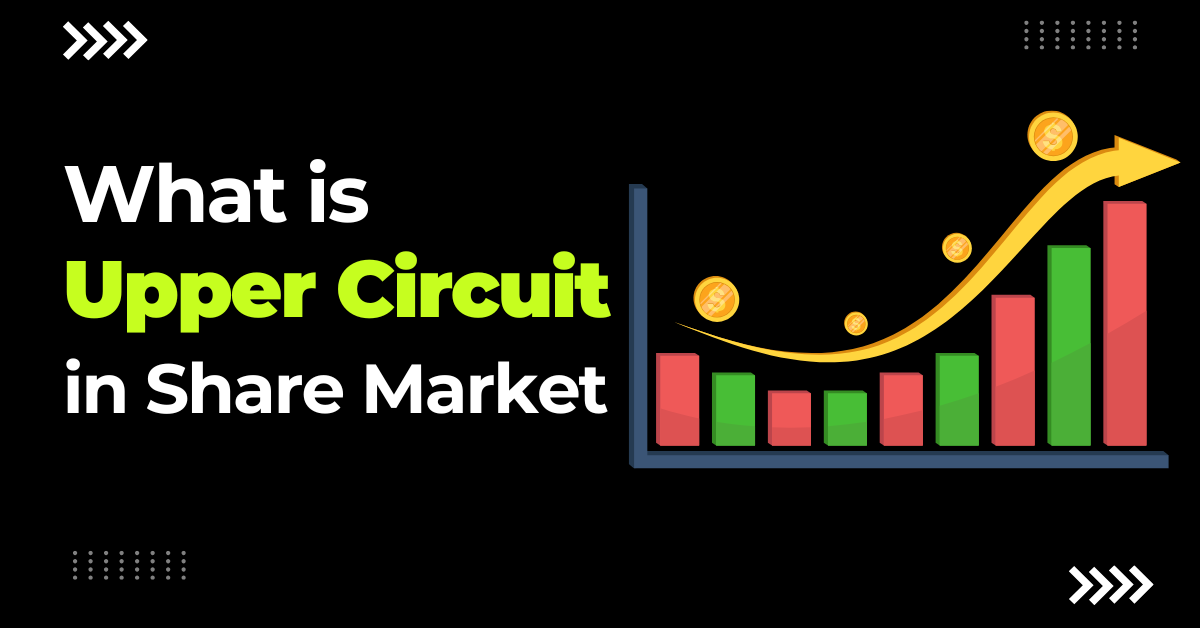
Have you ever heard someone say a stock “hit the upper circuit” and wondered what it means? If you’re new to the share market—or even if you’re not—this term can sound tricky. Don’t worry, we’ve got you covered! In this guide, we’ll explain the upper circuit in share market in a super simple way. You’ll learn what UC means in the stock market, why it happens, and how it affects your trading. By the end, you’ll be talking about UC stocks like a pro. Let’s get started.
So, what’s this upper circuit in share market all about? Imagine a stock price zooming up like a rocket. The upper circuit—or UC—is a limit set by the stock exchange to stop that rocket from flying too high, too fast. It’s like a speed breaker for stocks.
Here are the main points:
UC Meaning: It’s the maximum price a stock can reach in a single trading day before trading pauses.
Why It Exists: To keep things fair and stop wild price jumps that could panic investors.
How It Works: If a stock hits its UC limit, buying keeps going, but selling stops until the price cools off.
Think of it as the exchange saying, “Whoa, slow down!” It’s a rule to protect you and the market.
Let’s break this down with an example. Say a stock closes at ₹100 today. The exchange sets its UC limit at 10% (this varies—more on that later). That means tomorrow, the highest it can go is ₹110. If it hits ₹110, it’s “locked” at the upper circuit.
UC Stocks in Action: Buyers can still bid, but no one can sell until demand eases or the next day.
Why It Locks: Too many buyers, not enough sellers—think of a hot new movie with sold-out tickets!
In 2025, with India’s market buzzing, UC stocks are common when big news—like a company’s mega profit—drives demand.
Stocks don’t just randomly hit the UC limit. Something exciting usually sparks it. Here are the top reasons:
Big News: A company lands a huge deal or posts killer profits.
Market Buzz: Rumors or hype (think IPOs or budget announcements).
Low Supply: Fewer shares are available, so buyers fight to grab them.
For example, in 2024, a small UC stock soared 20% in a day after a government contract win. That’s the upper circuit in the share market doing its job—capping the madness!
Not every stock has the same UC limit. It depends on the stock’s volatility—how much it bounces around. In India (NSE/BSE):
20% UC Limit: For most small or risky stocks.
10% UC Limit: For mid-sized stocks.
5% UC Limit: For big, stable stocks like Reliance or TCS.
When a stock hits the upper circuit in the share market, it’s a mini-drama:
Trading Pauses: No trades until buyers and sellers balance out.
Price Stays Put: It’s stuck at the UC limit (say, ₹110) for a bit.
Next Day: If the hype continues, it might jump again—watch those UC stocks!
Traders love it (profits!) but hate it (can’t sell!). It’s a double-edged sword.
Seeing a stock hit UC mean in stock market terms can feel like a golden ticket. But hold on—here’s the deal:
Pros: Early buyers cash in big if the rise keeps going.
Cons: You might get stuck if the hype fades.
Tip: Research why it’s spiking. A solid reason (like earnings) beats random buzz every time.
Want to find UC stocks before they lock? Try this:
News Alerts: Follow market updates—big wins often trigger UC.
Trading Apps: Check “gainers” lists on Zerodha or Upstox.
Volume Spike: Huge buying volume hints at an upper circuit in the share market moment.
Stay sharp—it’s fast-paced
The upper circuit in share market is like a safety cap on a stock’s wild ride-up. Now you know what UC means in stock market terms: a limit to control price jumps, protect traders, and keep things normal. Whether you’re eyeing UC stocks or just learning, understanding the UC meaning gives you an edge. So, next time a stock hits its UC limit, you’ll get why—and maybe even spot the next big mover. Ready to dive into the market? Share your thoughts below—we’d love to hear
Chat Now